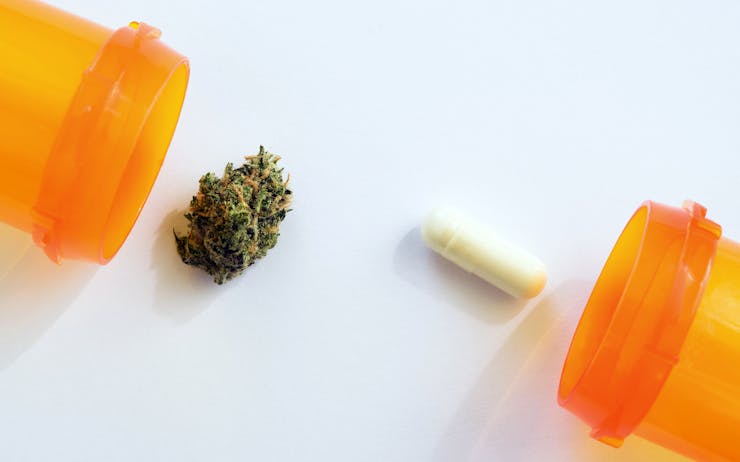In the US, we’ve seen a marked drop in opioid overdoses in legal states, prodding the question of whether patients are replacing their prescription medicines with cannabis. Recent survey data collected from patients enrolled in Canada’s MMPR program indicates this may be more than just a correlation.
Led by researchers Philippe Lucas and Zach Walsh, this investigation surveyed 271 patients purchasing medical cannabis from Canadian LP Tilray (which, like Leafly, is owned by Privateer Holdings). Seeking to understand who is using medical marijuana and why, they discovered some staggering statistics pertaining to substitution–63% of respondents reported using cannabis in place of prescription medications.
Breaking down the results by drug classes, Lucas and Walsh found that:
- 30% of respondents replaced opioids with cannabis
- 16% replaced benzodiazepines
- 12% replaced antidepressants
The reason? “Less adverse side effects,” said 39% of patients. Others responded that cannabis was safer (27%) and more effective in treating symptoms (16%).
“In light of the growing rate of morbidity and mortality associated with these prescription medications, cannabis could play a significant role in reducing the health burden of problematic prescription drug use,” the authors wrote.
Putting to rest concerns of cannabis dependence, the survey also established a strong tendency for recreational use to precede medicinal use, not the other way around as we see with many pharmaceutical medications. A transition from medical to recreational use was only reported by less than 3% of respondents, indicating a low risk potential.
The substitution effect reaches beyond just the medicine cabinet; cannabis also helped patients curb other types of substance use:
- 25% of respondents replaced alcohol with cannabis
- 12% of respondents replaced cigarettes/tobacco with cannabis
- 3% of respondents replaced illicit drugs with cannabis
Though widely supported by anecdotal evidence, this study is one of hopefully many to substantiate what patients have been experiencing for themselves when it comes to replacing other drugs and habits with cannabis. How might these statistics look in the US, where prescription medication use and abuse runs rampant? That’s a question for future research.






